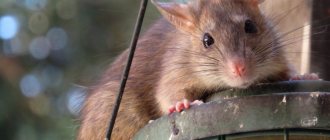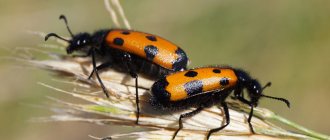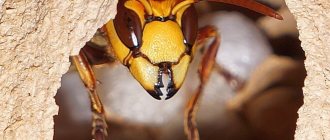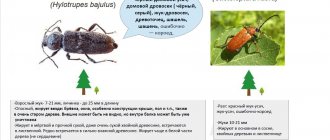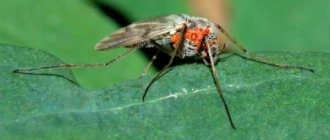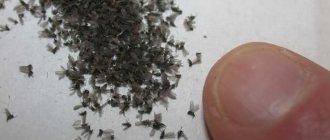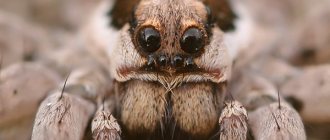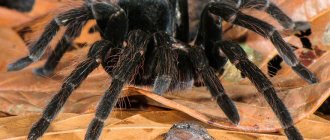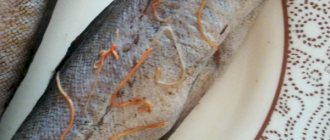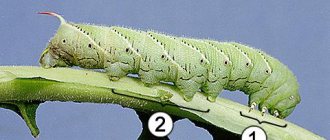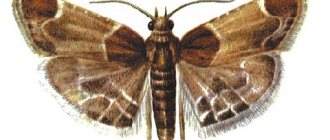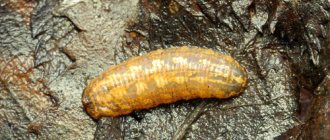The wasp is mainly associated among modern citizens with the traditional black and yellow color. However, there are a huge number of species of these insects around the world. Some of them are herbivores, while others are true predators that attack other living things. Among the most interesting to study are black wasps, which immediately attract attention due to their rather large dimensions compared to their other counterparts.
Basic details
This insect belongs to a fairly common family of road wasps. As mentioned above, in terms of body size they are much larger than many other species. The body length of adult individuals can easily reach 55 mm. In this regard, only hornets can compete with them. Their color is not always pure black. There are times when the body color takes on a blue-violet hue, which actually looks quite attractive. Black wasps have four wings and a very strong sting, thanks to which they can harm an impressive number of their potential victims. A black wasp sting can easily be compared to a red ant attack.
It should immediately be noted that the family of insects presented is quite common. As an exception, we can highlight the coldest regions, where black wasps simply cannot establish their usual way of life. This creature prefers to settle in the ground, where you can find small burrows. The method of reproduction is also original. If most wasps lay eggs in special chambers located inside the nest, then their black relatives place their future offspring directly on already paralyzed spiders, which will subsequently serve the larvae as the most suitable food. That is, the food supply for the hatched larvae will be created in advance.
The main consequences of a black wasp sting:
- manifestation of an allergic reaction;
- severe itching;
- redness on the body;
- serious pain.
The above consequences are caused by the action of the poison that the wasp introduces into the body of its victim. It is clear that the bite of just one individual will not be enough to paralyze a person’s movements. However, you still need to be prepared for the negative events presented above. Doctors do not recommend contacting black wasps for people suffering from various types of allergies.
Who are black wasps
These insects belong to the family of road wasps.
They are much larger than other species and sometimes reach 55 mm in length. Their color is blue-violet or black. They have four wings and a very strong sting. The pain of a black wasp sting can be compared to the bite of a red ant. This insect belongs to a fairly common family of road wasps. As mentioned above, in terms of body size they are much larger than many other species.
The body length of adult individuals can easily reach 55 mm. In this regard, only hornets can compete with them. Their color is not always pure black.
There are times when the body color takes on a blue-violet hue, which actually looks quite attractive.
Longhorn beetle
Imitates the color of Plagionotonus wasps, a representative of longhorned beetles. Outwardly it resembles a bug. Hard chitinous cover, oblong body, head clearly visible, very long, curled mustache. There are no transparent wings, the insect rarely flies. Color black and yellow with stripes.
Longhorn beetle
The body length of an adult reaches 22 mm. The female lays eggs in the wood. During its entire life it reproduces about 100 thousand of its own kind. The larvae gnaw through numerous tunnels and damage the tree. Transformation into an adult takes a long time - up to 10 years. A typical representative of pests with which humans wage a merciless fight.
An insect that closely resembles wasps is a representative of the same family - the hornet. The largest species, characterized by aggressive behavior. Destroys wasp and bee hives. The size of the body reaches 3 cm, the average wasp is 1.5 cm. Massive body, powerful jaws, strong limbs. The giant wasp bites painfully and the venom causes severe allergies.
Wasps are unique insects whose lifestyle, behavior, and physiological abilities are a constant object of study. Insects that have external similarities with them are no longer similar.
What does it look like
The black wasp is slightly larger in size than its usual yellow relatives and reaches 1.5-5 cm in length. They have a dark head and chest, the abdomen can be covered with spots or stripes of yellow, white, purple, which depends on the type of pompilid.
The wings are smoky and when folded are located parallel to the body. The legs of earth wasps are thin and long, equipped with ridges for digging. The head has eyes and antennae. The body is covered with thin short hairs.
Pompylids have a very powerful sting that easily penetrates the shell of insects or larvae. Black individuals move feverishly, performing zigzags; they constantly flap their wings. Such dashes are periodically replaced by short flights. Wasps feed on nectar, while the larvae are fed on the prepared body of a spider or other insect.
An insect that looks like a wasp - who is the best imitator?
Knowing what a hornet looks like, you can still confuse it with similar winged brothers. These could be wasps, bumblebees, and other types of hornets. The Scolia wasp has a number of differences: it is larger in size and can reach 6 cm in length. Males are slightly smaller than females. But you should focus not only on size.
- Scolia is distinguished by large yellow spots, located on the abdomen in two rows.
- Also, the head has a different color, it is yellow, while the black hornet does not have such “decorations”.
- If you remember about the places where black hornets are found, you can understand that it cannot be found in the central part of Russia. Accordingly, in front of the observer, most likely, it is scolia.
Given these features, it is easy to distinguish between the two insects. An inexperienced observer may confuse a bumblebee and a hornet, or mistake it for a wasp. But the latter has a clearly defined waist, while the bumblebee has a rounded body. In addition, Scolia is distinguished from other similar insects by its gigantic size.
Wasps, in order to feed and raise their offspring, are forced to hunt. They are able to attack even insects that are smaller in size.
Their powerful jaws and the poison they inject into their prey help them cope with their prey.
Due to the predatory characteristics of wasps, many representatives of the fauna are afraid of them and prefer to stay away from dangerous predators. The weaker imitators took advantage of this.
There are many insects similar to wasps in the world. Let's consider the most interesting and prominent representatives.
Hover flies
Hoverflies, also known as syrphids, are a large family with about 6,000 species. Some of them look more like bees, others like wasps, and others like bumblebees. They live everywhere, with the exception of Antarctica, desert areas and tundra. They got their name because of the characteristic sound made by their wings.
Interesting! Syrphidologists study hoverflies. They even hold special symposiums dedicated to fly research.
Syrphid larvae look like small leeches. They are distinguished by a wrinkled body of yellow or greenish color. They have no legs and are not particularly mobile. They feed on aphids, insect eggs, and spider mites, which bring considerable benefits to agricultural land. A caring mother syrphid lays eggs directly in the aphid habitat.
The development period of the hoverfly larva lasts 15-20 days. Young individuals are very voracious and by the end of growing up they eat up to 200 aphids, and in general they destroy about 2000 small insects during their lives.
However, not all hoverfly larvae prefer to see garden pests on their menu. The food preferences of all species are very diverse. Some of them are purely vegetarians and eat only plant tissue. The most exotic representatives process manure or wood.
Butterflies in the form of wasps
A large insect that looks like a wasp may turn out to be quite an ordinary glass butterfly. However, this is not the only remarkable thing about the airy fluttering creatures. Most of them are distinguished by transparent wings. And if not for the contrasting border, it would be impossible to visually determine the presence of wings.
The most common species in the European part are poplar, currant, and apple. The insect is associated with the wasp exclusively by its bright yellow striped body color and flight style. Otherwise, it is a typical garden pest. The female lays eggs under bark scales near the buds.
And although an insect similar to a wasp does not bite a person, its harmfulness is significant.
An interesting picture is presented by the mating games of glass butterflies. The males gather in a circle near the female and begin to flutter around the lady, as if surprising her with their abilities and showing themselves in all their glory. The female can only choose the individual she likes.
A black insect that looks like a wasp is a predator. Outwardly, it has much in common with predatory road wasps, capable of preying even on poisonous spiders.
Unlike its predecessors, the predator does not need to mimic wasps. He himself is a predator, feeding on insects and larvae. Some tropical species have a preference for human or mammalian blood.
The striped beetle feeds on nectar and takes part in pollinating flowers. In case of danger, it begins to quickly flap its wings, thereby increasing its resemblance to a wasp.
Features of existence
Road wasps (there is a photo in the article) reach 40 mm in size, move quickly, and constantly flutter their transparent wings.
In search of food they fly very close to the surface of the earth. They do not live in families; they prefer a solitary existence. Caring for the offspring consists of preparing a sufficient supply of food for future larvae. On the eve of laying eggs, females go out to hunt for prey, which for the most part are spiders. Then the victim, paralyzed by the sting, is dragged into a previously dug hole in order to lay eggs on it. Sometimes road wasps take over other people's burrows with already prepared prey, for which they are called kleptoparasites.
In addition to burrows dug in the soil, some females use tree trunks and strong plant shoots to lay eggs; they can sculpt clay nests themselves on stones, branches, and lower leaf plates.
How wasps arrange their homes
The queen wasp begins building a nest; to begin with, she only needs a dwelling the size of a walnut - there she will lay her first clutch of eggs. She builds only one layer of the nest, then gradually builds on the next.
She will begin to build the nest herself until the worker wasps hatch from the first clutch, which will continue their work, completely freeing her for further procreation and increasing the number of livestock in the swarm.
Wasps of a single species build their homes in their own way. This may be a small cell located in a place where prying eyes will not penetrate and precipitation will not fall.
For example, pottery wasps build dwellings from natural mud, shaped like a vase; structures are attached to tree branches or to the walls of human buildings.
Some wasps make homes in plant stems they have bitten through or dig holes in the soil. A single wasp can settle in any small crack located on a piece of thick cardboard, or in gardening gloves forgotten and lost in the garden.
The peculiarity of solitary wasps is that having laid a clutch, they seal it, and there is no interaction between adults and larvae.
There is an observation that from those cells that are smaller in size than the others, male larvae hatch, which means that the males are smaller in size than the females.
Mimicry
As already mentioned, syrphids are very similar in appearance to stinging insects - wasps, bees, bumblebees. The hoverflies seem to be camouflaged as them, and their striped black and yellow coloring helps them in this. But upon closer examination, you can notice the difference:
- syrphids have much shorter antennae (for example, a wasp has antennae up to 1 cm);
- they are smaller than wasps, bees, etc. (excluding especially large species);
- they have 1 pair of wings, while the stinging ones have 2.
But even with these minor differences, nothing prevents syrphids from feeling quite at ease and boldly in nature: their external imitation (mimicry, from the English word mimicry - disguise, imitation) of dangerous stinging insects is so believable that few birds risk attacking them, especially if you have already had a sad experience of contact with a wasp. But all this is despite the absolute harmlessness and even some defenselessness of the syrphids.
Nature has endowed these flies with such a coloring, thanks to which they may not be afraid of attacks from enemies. Hence several more popular names for hoverflies: bee-eater, wasp-fly, wasp fly, etc.
Bee
Insects similar to wasps are bees. They are extremely often confused with each other. A bee and a wasp have some similarities in their lifestyle, they even sting just as painfully. The bee has a round shape, the head and chest are gray-black with thick, long yellow hairs. Massive paws, long whiskers are clearly visible. A striking distinctive feature is the absence of a “wasp waist” - a thin bridge between the chest and abdomen. The color is yellow-black, but the stripes are narrower and covered with yellow hairs.
Bee
Bees feed exclusively on nectar and form honeycombs from wax, which they produce themselves. Thanks to their ability to reproduce honey, they have long been domesticated and live in beehives. They are periodically attacked by the wasp family. This fact refutes the statement that wasps do not attack their own kind. The similarity in color must be explained by something else.
Habitats
The black wasp in Russia is found in the forest, in fields, along roads, in personal plots, in gardens, and in vegetable gardens. The main criterion for choosing habitats is soil. It should be loose enough for digging, not loose, so that the minks do not collapse. Most often it is a mixture of sand, clay, and limestone.
Black wasp
On a note!
The black wasp often settles near a person’s house, but it is quite difficult to spot a single insect. In the garden, the insect brings benefits by destroying spiders, flies, and pollinating plants.
Where does the wasp spider (Argiope Brünnich) live?
The wasp spider is a fairly numerous species. It is widespread in the countries of North Africa, Asia Minor and Central Asia, India, China, Korea, Japan and the USA. It is also a common arachnid in Central and Southern Europe, Kazakhstan, Crimea and the Caucasus. In Russia, the spider wasp was noticed in several regions: Chelyabinsk, Saratov, Ulyanovsk, Tambov, Oryol, Lipetsk, Penza and Bryansk. Probably due to the increase in average annual air temperature, Argiope Brünnich also began to be noticed in the Tula, Ryazan regions and in the Moscow region. According to the latest data, the black and yellow wasp spider began to appear in the Kaluga region, as well as in the Novgorod region on the territory belonging to the Rdeisky Nature Reserve.
The wasp spider's favorite habitats are located in areas exposed to the sun: fields, lawns, along roadsides, forest clearings and forest edges. The black-and-yellow striped wasp spider places its hunting nets on various low vegetation, giving particular preference to xerophilous plants growing in particularly dry areas of the area.
A unique feature of all orb weavers, including the wasp spider, is their ability to move considerable distances thanks to their web threads, picked up by rising air currents. This manner of settlement has led to the fact that some southern populations often end up in northern territories.
Photo credit: EapClochydd
Description of appearance
Black wasp is medium or large in size – 15-50 mm. Dark head, chest, abdomen with stripes and spots of yellow, white, red, purple. The wings are dull, smoky, folded parallel to the body.
The legs are long, thin, and have digging ridges on the front legs. Hind tibia with spines and tubercles. On the small head, eyes and small antennae are clearly visible. Pompilids have a powerful sting, with which they calmly pierce the shell of large insects and their larvae. A photo of a black wasp is presented below. The color varies depending on the species.
Red-bellied road wasp (Anoplius viaticus)
Distributed in central Eurasia. The length of the body of this wasp is from 6 to 15 mm. The chest of the red-bellied black wasp is black in color, its base is covered with felt formed by light short hair. The abdomen is red on the front side, with black stripes. The female of this wasp species preys on the wolf spider . Before hunting, she digs a nest, into which she then drags the paralyzed victim and lays an egg on it.
Crossbill wasp (Batozonellus lacerticida)
The black wasp is large in size, with an average length of 10–21 mm. The body is covered with yellowish spots, the limbs are predominantly yellow-orange, the wings are dark with yellowishness, framed at the edges by a dark border. These wasps hunt, as you might guess from the name, cross spiders. The nests into which they drag the prey are made in the sand. This individual is distributed throughout almost the entire territory of extratropical Eurasia to Japan to the east and in North Africa.
Dipogon hircanum
This wasp is 0.5-1 cm long and has a completely black color. The front wings have a dark spot in the upper corner. The object of hunting for females of this species of wasps are side-walking spiders that live in trees. They create nests in the inner part of shoots or stems. They live everywhere in extratropical Eurasia, east to Japan and Kamchatka.
Bee
Insects similar to wasps are bees. They are extremely often confused with each other. A bee and a wasp have some similarities in their lifestyle, they even sting just as painfully. The bee has a round shape, the head and chest are gray-black with thick, long yellow hairs.
Massive paws, long whiskers are clearly visible. A striking distinctive feature is the absence of a “wasp waist” - a thin bridge between the chest and abdomen. The color is yellow-black, but the stripes are narrower and covered with yellow hairs.
Bees feed exclusively on nectar and form honeycombs from wax, which they produce themselves. Thanks to their ability to reproduce honey, they have long been domesticated and live in beehives. They are periodically attacked by the wasp family.
Habitat and lifestyle
In Russia, the large black wasp is found everywhere except in regions with extremely low temperatures. The larvae, which begin their development in late spring or early summer, spend the winter in a protected cocoon.
The black and yellow wasp spends the day searching for food. Its main prey: spiders or other insects. Also, the wasp is not averse to feasting on nectar. At night, she hides on flowers, in the grass or under the bark of trees. The black color camouflages wasps at night.
Glass butterflies
An insect that looks like a wasp with a long body may be a butterfly. The external similarities are striking. A distinctive feature is the wide transparent wings with a pronounced pattern in the form of oblong lines. The body is large, massive, similar to a large wasp. Colored in yellow and black wide stripes. Long, curled antennae are clearly visible on the head.
Glass butterflies
On a note!
The flight is different. The butterfly flutters easily, does not make sudden movements, and does not create buzzing sounds, as is typical of wasps.
The most common types of glass butterflies in countries with temperate climates are currant, poplar, and apple. It is a typical representative of garden pests. The eggs hatch into caterpillars that feed on the insides of the shoots. They penetrate into the stems, under the bark. Glassworts are difficult to notice and remove, and cause great harm to gardening. The wasp is exclusively associated with similar colors.
How it feeds and reproduces
The main diet of black wasps consists of:
- small, often poisonous spiders;
- bedbugs;
- large flies;
- larvae of other insects.
As mentioned earlier, the breeding season occurs in the warm season - spring or summer. Unlike most representatives of Hymenoptera, the queen lays eggs in special depressions of three to four centimeters. For this, only loose soil or rotten, soft wood is used.
A nest with black wasp larvae is often found near a person. For example, this could be a garden or vegetable garden.
The larvae eat the same things as the mature representatives. Food is supplied by the female, who paralyzes her victims with poison. Only one larva lives in one hole.
Rider
An insect with a long body and a sting makes many puzzle over the name of this creature. The wasps are solitary wasps. They do not build typical nests and do not swarm. Distributed everywhere, including many genera and species. They differ in color and body length. Some have no wings at all, more like an ant.
The most striking representative is the equestrian with a long tail. An elongated black body, high limbs, narrow wings, and a sting. Unlike other wasps, ichneumon wasps use a sting to lay eggs. They pierce the victim’s body, inject poison, and lay their offspring. This is where the female's mission ends. The larvae develop independently. The victims include spiders, beetles, butterflies, and larvae of large insects.
Source
How dangerous is an insect and its poison?
The bright yellow color is a warning. It gives predators the information that this order of insects is poisonous and can pose a serious threat to the attacker.
The venom of one wasp does not paralyze an adult, but can cause an allergic reaction. It is indicated by the following symptoms, which appear within an hour after the poison enters the body:
- severe itching;
- skin rash;
- burning at the site of the bite.
So, doctors identify four possible outcomes after a bite:
- A common local or non-allergic reaction. Symptoms pass quickly: from a couple of hours to one day. Least painful.
- Severe local allergic reaction. Swelling with a radius of five centimeters lasts for 24 hours or more. Usual symptoms are accompanied by inflammation of the lymph nodes, a sharp increase in temperature, and headache.
- General allergic reaction. In addition to the usual feeling of malaise, severe swelling, nausea, diarrhea, and shortness of breath are added. Possible abdominal pain, panic attacks and bluish discoloration of the bite site, or cyanosis.
- General toxic or non-immunological reaction. The formation of blood clots in the vessels, sudden destruction of muscle tissue, hemolysis or disruption of the myocardium, the main muscular part of the heart, are observed.
In rare cases, a bite can cause anaphylactic shock, accompanied by a sharp decrease in blood pressure. It is especially dangerous for children, the elderly and pregnant women and can even be fatal.
Use of poison in medicine
It is known that bee stings are used in medicine for certain diseases, but with wasp stings the situation is more complicated. To date, there is no data on the widespread use of wasp venom in medicine for the reason that it is very difficult to obtain. However, experimental development is still underway, but so far in small quantities.
For example, there is an opinion that wasp venom kills cancer cells, and in Spain and some other countries, based on some components of this poison, they are trying to create a cure for cancer tumors, and the results are supposedly encouraging. But this invention has not yet been officially confirmed or patented. The research used venom from the Brazilian wasp Polybia paulista, and the results were promising: the venom affected some cancer cells and did not kill healthy cells. But the research has not yet been completed and the finished drug has not yet been released.
Wasps are able to distinguish between their relatives. This feature is inherent only in social species of wasps, which have their own hierarchy. Solitary wasps cannot do this.
The production of vaccines based on wasp venom for those who suffer from allergic reactions to the bites of these insects is not yet so widespread. The vaccine contains low amounts of histamine and toxins. At the same time, a certain amount of substances is retained by which the immune system “recognizes” the allergens contained in the poison. This vaccination is done before the activity of these insects begins, and the reaction to the bite will no longer be so strong. But, unfortunately, this is also not very common yet.
Rules for first aid for a bite
Timely assistance is divided into the following stages:
- Disinfecting hands with soap.
- Rinse the wound itself under slightly cold water to prevent dirt from getting inside.
- Disinfecting the bite site, for example, with hydrogen peroxide.
- Apply a compress in the form of a piece of cloth soaked in slightly cold water.
- Taking any antihistamine: Supradin, Zodak, Erius, taking into account contraindications and dosages specified in the instructions.
In addition to special medicinal products, lotions made from tea, onion or plantain are very effective for relieving swelling.
Interesting! Contrary to popular belief, unlike a bee, a wasp does not leave a sting after stinging.
If several wasps attack at once, or if, after being bitten by one individual, the symptoms do not go away or intensify within several days, you should immediately consult a doctor. Even after apparent complete recovery, a visit to a local clinic is recommended.
Hover flies
One of the most useful insects in our area, which people try in every possible way to attract to their area. Externally, the striped insect is very similar to a wasp, but also has similarities with a fly.
- The abdomen is striped with a black and yellow tint, but unlike predators, yellow predominates, the stripes are narrow.
- The wings are different. They are more similar to a fly - wide, transparent. In flight they also behave differently from wasps.
There are more than 6 thousand species of hoverflies. Some strongly resemble wasps, others hornets, others bees. Distributed everywhere. In the warm season, they can be found in beds with carrots, dill, parsley, and flower beds with flowering plants. Adults feed exclusively on pollen and are one of the most important pollinators.
Hover flies
How to get rid
A wasp sting is most dangerous for children and people with individual intolerance. If the insect nest is located close to your home, then it is better to get rid of it. This can be done both with the help of chemicals and using a mechanical method of control.
Chemical control
Most often, chemicals can be found in aerosol form. The concentrated insecticide does not poison the ground and is practically safe for people.
Most Popular:
- Moskitol. It is necessary to spray strictly in an open space. If you need to spray the hole, then reduce the dose by 2-3 times.
- Gett. A powerful, odorless drug. It has a long-lasting effect, as it remains active for 5-6 months after spraying.
Physical methods
The nest should be removed from the property wearing a protective suit or after pre-treating the area with chemicals. If the nest is located in the ground, then you can dig up the area and pour boiling water over it.
When it is necessary to lure out adults, sweet traps are used. They are made from a plastic bottle and compote or fruit juice. The bottle is cut in half and the upper part is placed neck down into the lower part, where the sweet liquid is poured.
Folk remedies
The Russian people have come up with many tricks to catch and destroy any wasps. The most famous, perhaps, are simple traps.
Bait trap
To create it you will need a large plastic bottle and 200 ml of sweet, sour compote or at least fruit juice.
- Cut the bottle along the bend in the middle.
- Pour the prepared solution into the bottom of the bottle, turn the top upside down and place it in the top.
Thus, it serves as a kind of limiter, allowing the wasp to fly in without the ability to slip out.
Pompilid species
Road or ground wasps live all over the globe, differ in size and color, but lead an identical lifestyle.
Pompilid species
- Dipogon is average. Latin name Dipogon hircanum. Completely black. Body size is about 1 cm. Wings with small dark spots. They hunt sidewalk spiders. They live in trees, building burrows inside branches, shoots, and hollows. They are representatives of the fauna of Japan, Eurasia, and Kamchatka.
- Crucifix wasp. In Latin Batozonellus lacerticida. A large black wasp with yellow stripes on its belly and orange wings. The limbs are black and red. Body size up to 21 mm. Cross spiders become victims. Nests are formed in the soil. They live in Eurasia, Japan, and North America.
- Red-bellied wasp (Anoplius viaticus). The insect reaches a size of 15 mm. The body is black, the abdomen is red. Hunts a wolf spider. Builds nests in the ground. The species is distributed in Eurasia.
- Black and white wasp. In Latin it is called Monobia quadridens. The body is black with white stripes and spots. The size of females is about 18 mm. The white wasp builds nests in various cavities and abandoned hives of tree bees. The victims are butterfly larvae.
Insects benefit agriculture by destroying a huge number of pests. However, an accidental collision between a person and a predator can result in a bite.
Record breaking insects
The fighter fly is the undisputed record holder among dipterans, but it is found only in South America. On the Eurasian continent, and particularly in Russia, there are other large flies:
- horse bloodsucker;
- ktyr;
- gadfly;
- bullfly.
- great gray horsefly
- bulldog fly
Important: unlike the fighter fly, representatives found in Russia pose a danger to humans and animals
Horse bloodsucker
The insect is also known as Hippobosca equina. An adult reaches 12 mm (most often 8.5 mm). The body is flattened, like all bloodsuckers. The color of the insect is brown with pale yellow spots on the back and abdomen. The wings are small but strong. On the head are dark brown compound eyes and powerful jaws comparable to small knives.
The adult sheds its wings after attacking an animal or person. A pest bite causes:
- skin irritation;
- pain;
- discomfort.
Important: the fly attacks only during the mating season, the rest of the time it feeds on nectar or pollen
Ktyr
Fly ktyr
A representative of this species can be found everywhere, with the exception of Antarctica. The fly is a predator-exterminator of various insects (flies, beetles, wasps, butterflies, grasshoppers, beetles), which sometimes provides a great service to humans.
It is distinguished by its large size (5-8 cm), strong body, strong limbs with spines, and a rigid proboscis. A characteristic feature of the structure of the imago is a large mesothorax and an elongated abdomen. The predator is black in color; sometimes there are species with brown, reddish or red sclerites. The entire body of the individual is covered with gray pollen; there are also specimens with a pattern of light stripes or spots. On the large head there are a compound eye, three simple ocelli and short antennae.
Great gray horsefly Tabanus autumnalis Linnaeus
Great gray horsefly Tabanus autumnalis Linnaeus
A large, well-recognized fly whose body length reaches 16-23 mm. Quite often, such horseflies are mistaken for gadflies, although the latter are representatives of the superfamily Oestroidea. The insect has a dark gray color, a black abdomen with a clearly recognizable pattern.
Females suck the blood of mammals and are capable of attacking humans. Before landing on their prey, they circle over it for a long time. Males of the large fly lead a vegetarian lifestyle, feeding exclusively on flower nectar. The insect is a carrier of very dangerous infections, such as anthrax.
You can meet such a fly in Europe, North Africa, Western Siberia, Asia, the Caucasus and Kazakhstan.
https://youtube.com/watch?v=7RfcuXPYPkU
Rating(2 ratings, average 5 out of 5)
Gadfly
There are 176 species of gadflies on earth. All of them have a massive body up to 30 mm long. Color depends on the species. There may be dense hairs on the body. On the head there are huge eyes consisting of 2500 facets. The wings have a characteristic pattern.
The adult lays eggs through a bite. The carriers are domestic and wild animals, as well as humans. The larvae live under the skin of the victim. It comes out only at the moment of pupation.
Important: a pest bite leads to serious consequences
Bullfly
An adult reaches 25 mm. The body of the insect is round and compacted. The back of the pest is dark gray. The abdomen is yellow with black stripes. There are large compound eyes on the head. In males they close. The wings located on the back are strong and have a characteristic pattern.
Females feed on blood:
- cattle;
- horses;
- large animals.
The food of males is nectar.
Bulldog fly
Bulldog fly
Another unpleasant insect is the Horsefly fly, also known as the bulldog fly. In Russia it is known as the gadfly.
Not only the size of the insects is impressive (their body length can reach 3-4 cm), but also their rather powerful shell. The bite of a gadfly is unpleasant and quite painful. Most often, cattle become victims of a bloodsucker attack; humans can also suffer. Thanks to their powerful mandibles, the flies' jaws exert strong pressure on the skin, cutting it like a knife.
Very often, these flies gather in a swarm and feed together, so if such a swarm attacks a clumsy animal, then the chances of driving away the bloodsuckers are almost negligible.
Benefit or harm
Human economic activities benefit greatly from wasps, because insects pollinate plants. In addition, they take part in the food chain, influencing the prosperity of various species of animals and plants. These predators eat many agricultural pests, which include caterpillars.
Despite the fact that the glitter sting contains a very small amount of a poisonous substance that does not cause any harm to humans, for some people such a bite can be quite dangerous, causing a severe allergic reaction and the formation of swelling.
In case of a bite, it is necessary to give one injection of diphenhydramine so that the wasp venom is absorbed in a short period of time. In addition, the victim needs rest, constant warming of all extremities, as well as plenty of hot drinks. In this situation, you should definitely consult a doctor.
Phylogeny[ | ]
Cladogram based on molecular phylogenetic study by Debevic et al
, 2012, shows that bees (Anthophila) evolved from deep within Crabronidae, which appear to be paraphyletic. The position of Heterogynaidae remains unclear. The small subfamily Mellininae was not included in this study.
| Apoidea | Ampulicidae |
| Heterogynaidae (possible placement #1) | |
| Sphecidae ( sensu stricto | |
| Crabroninae (part of "Crabronidae") |
(rest "Crabronidae")
| Bambicini |
| Nyssonini, Astatinae |
| Heterogynaidae (possible placement #2) |
| Pemphredoninae, Philanthinae |
| Anthophila (bees) |
Preventive actions
Black wasps have a sweet tooth. They love floral aromas and fruits. To prevent them from approaching your home, you should not plant flower beds under the windows of the house. It is also unacceptable to throw away spoiled fruit to rot in the garden.
When harvesting, you should carefully inspect each fruit so as not to bring insects into the house . To prevent bites, women are not recommended to use bright perfumes that can attract wasps during the summer months.
Black wasps rarely attack without reason, usually it becomes their self-defense when a person threatens their life. On the contrary, they help people fight pests in the form of spiders, bedbugs, and flies.
Therefore, there is no need to get rid of them except in cases of individual intolerance to poison. In this situation, in order for the earthen insect to stay away from the home, the number of flower plantings near the house should be limited and the missing products should not be stored for rotting.
Danger
The sting of a black wasp is compared to a red ant. Causes severe pain, redness, swelling, swelling. Vivid painful sensations are present for 3 days. can cause a severe allergic reaction, including anaphylactic shock. At risk are young children, pregnant women, and the elderly.
The black road wasp feeds on nectar of flowers, plant juices, fruits, and obtains protein food for the larvae. Often settles on human territory, but does not approach the house. When colliding with people, it tries to quickly fly away or crawl away. Pompilids are less aggressive than paper wasps, social wasps, and therefore sting much less often. They use their sting to protect their own lives; they will not bite without a threat.
Meaning for a person.
Blue mud wasps often make their nests in buildings and therefore cause some nuisance with their presence. But their harmless habits and the use of spiders for breeding, as a rule, compensate for their habitation in buildings. Therefore, you should not destroy blue mud wasps if they have settled in your home; they are useful and feed their offspring with spiders, which can be poisonous. If a blue mud wasp has flown into your home, try carefully covering it with a jar and then releasing it outside. This type of wasp controls the number of karakurt spiders, which are especially dangerous.
What do pompylids eat?
Pompylids feed on various insects, but mainly on spiders, which are larger in size than themselves. This is due to the fact that this type of wasp has the strongest and most developed sting, unlike other wasps. In addition, road wasps developed their food extraction tactics very carefully and thoughtfully. They direct their sting to the point where all the nerve endings of the spiders, which are responsible for controlling the limbs and abdomen, are concentrated. Therefore, the road wasp can very easily and accurately neutralize its prey.
But before this, the wasp must plunge its stinger into the spider’s oral cavity in order to neutralize the poisonous chelicerae located in it. If a wasp wants to eat a spider living in a hole, then before grabbing it, it must drive it to the surface. In its hole, the spider feels very comfortable and confident, but when it comes out into the light, it becomes weak and defenseless, which helps the hungry wasp to easily grab and neutralize the spider. After the prey is paralyzed, the wasp leaves it for a while to find a suitable place to store it.
What to do if you are stung by a road wasp?
If, nevertheless, you did not please the road wasp in some way (maybe it did not like your perfume or behavior), and it stung you, try to do the following: take a painkiller and an antihistamine. The pain from the bite is very severe and can last up to 72 hours. People with a low pain threshold may even develop a state of shock. In addition, the poison that the wasp injects into its victim causes severe tissue swelling and allergic reactions. It is especially dangerous when the bite occurs in the neck or head area. Therefore, after a bite you should immediately consult a doctor.
We in no way want to scare anyone with our article. The likelihood of encountering this Maya bee in Thailand is quite low. In any corner of our planet you can always find some unpleasant creature. We just want to convey to readers the idea that when going on a trip to Thailand, it is worth remembering that this is a country with tropical nature, which is as beautiful as it is harsh with those who neglect it.
What are the benefits of wasp stings?
Is there any benefit from a wasp sting? Can the poison have a beneficial effect? Let's look at the benefits of a wasp sting for humans.
It is impossible to answer unequivocally. Due to the fact that bee and wasp venoms are similar in composition, those who like to use bee products as medicine think that a wasp sting is as beneficial as a bee sting, and their venom can help against diseases.
If we follow this hypothesis, then the only difficulty before the practical use of wasp toxic substances in medicine is that the raw materials are very difficult to obtain. Bees are specially bred and their venom can be obtained in large quantities in the apiary using a well-established method, and you will have to go to the found nest for the wasp venom. Second option: organizing mass construction of nests is possible. They can be populated with wasps. But this method has been little studied, and problems may arise.
Scientists have studied the poisonous substances of the wasp and imagine how they behave with various organs and tissues. The effect of the poison, its usefulness or damage directly depend on the reaction of the organism itself to the bite. In the end, even doctors and toxicologists have not made a final decision on whether wasp stings are beneficial. The poison contains many stimulating and tonic components, substances that stimulate metabolism, but their isolation is difficult and unreasonable, because now safer analogues can be found on the market.
The main benefit of wasps is their intensive pollination of plants in the spring together with bees. They are involved in the transfer of pollen from one flower to another, searching for nectar. Thanks to their significant contribution, the level of productivity increases.
In addition, thanks to wasps, there are fewer insects that eat fruits or plants. They exterminate pests such as aphids, flies, fleas, caterpillars, bedbugs and others. One individual can destroy up to three dozen pests per day.
And yet, does wasp venom bring benefits or not? A bite will not bring any benefit to a person. But doctors officially use wasp venom. It is used in the manufacture of special vaccines for those susceptible to allergies and in products that are intended to reduce sensitivity to poisons and bites.
The products are removed in the spring, when striped hymenoptera begin to attack. If a person is given the vaccine, he will become immune to wasp venom. That is, the body will not react to the bite.
And in Europe, scientists are researching wasp venom as a drug that can treat cancerous tumors. And there remains hope that they will one day achieve a positive result.
